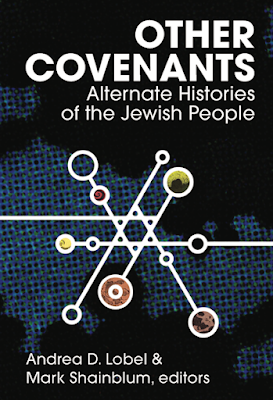The Man Who Could Have Shot Hitler
I was interested to learn
of David Johnson’s new book, The Man Who Didn’t Shoot Hitler (The Story of
Henry Tandey VC and Adolf Hitler, 1918), which has received a lot of attention
in the British media. The book’s implicitly
counterfactual title alone makes it intriguing.
The title refers to the
alleged encounter (“alleged” because it remains unverified) between Tandey and
Hitler at the Battle of Marcoing in France on September 28, 1918.
As The Daily Mirror
reported in a recent article:
“In the dying moments
of the First World War 22 years earlier, [Tandey] had pointed his rifle at a wounded
German soldier trying to flee a French battlefield. Their eyes met and Henry
lowered his gun. The German nodded in thanks then disappeared.
In that moment of
compassion for a fellow human being, Henry, then 27, let 29-year-old Corporal
Adolf Hitler walk free.
Free to become the
most reviled dictator and mass murderer of all time.
‘I didn’t like to
shoot at a wounded man,” he said in 1940. “But if I’d only known who he would
turn out to be... I’d give 10 years now to have five minutes of clairvoyance
then.’
It was the biggest “what if?” in history and, until
his death in 1977 at the age of 86, Henry had to live with the stigma of being
“The Man Who Didn’t Shoot Hitler.”
The intrinsic interest in
Tandey’s life revolves around the question of how history would have been
different if he had shot Hitler.
Needless to say, the premise requires that Tandey actually had the
opportunity to kill the future dictator.
It is anything but clear whether or not this was the case, however.
A recent NPR story casts
doubt on the likelihood that the two soldiers encountered one another as legend
would have it. Moreover, as the Mirror
explained, the source for the story of Tandey’s historic act of omission was none
other than Hitler himself.
“For 20 years Henry
had no idea he had missed the chance to kill Hitler. But in 1938 he received a
shocking phone call from Prime Minister Neville Chamberlain, who had just
returned from a fruitless meeting with Hitler to try to talk him out of war.
Chamberlain had been
invited to Hitler’s hilltop retreat in Bavaria and shown a reproduction of a
famous painting called The Menin Crossroads.
An Italian war artist had captured soldiers of the Green Howards evacuating the wounded at the Battle of Ypres in 1914 – with Henry Tandey in the foreground carrying a comrade on his back.
An Italian war artist had captured soldiers of the Green Howards evacuating the wounded at the Battle of Ypres in 1914 – with Henry Tandey in the foreground carrying a comrade on his back.
Incredibly, Hitler
recognised him as the man who spared him four years later on September 28,
1918.
He told Chamberlain:
“That man came so near to killing me I thought I should never see Germany
again. Providence saved me from such devilishly accurate fire as those English
boys were aiming at us.”
Needless to say,
Hitler was far from being a reliable source about his own biography.
But we can assume that
he had his reasons for making his claim about Handey.
It seems clear that
Hitler saw it in his interest to claim that Handey (then Britain’s most
decorated WWI hero and thus an appealing person for Hitler to claim a historic
connection to) spared his life. This
enabled Hitler to validate his longstanding belief that Providence was
committed to ensuring he fulfill his world historical mission.
This being the case,
it would seem as if Tandey’s current, counterfactually inflated reputation as the
man who “could have changed history, but didn’t” is itself dependent upon
Hitler’s own counterfactual effort to inflate his own post-World War I
significance.
The ongoing fantasy
about Tandey rests on Hitler’s own counterfactual nightmare.
Both highlight the
ongoing psychological appeal of counterfactual speculation.




Comments